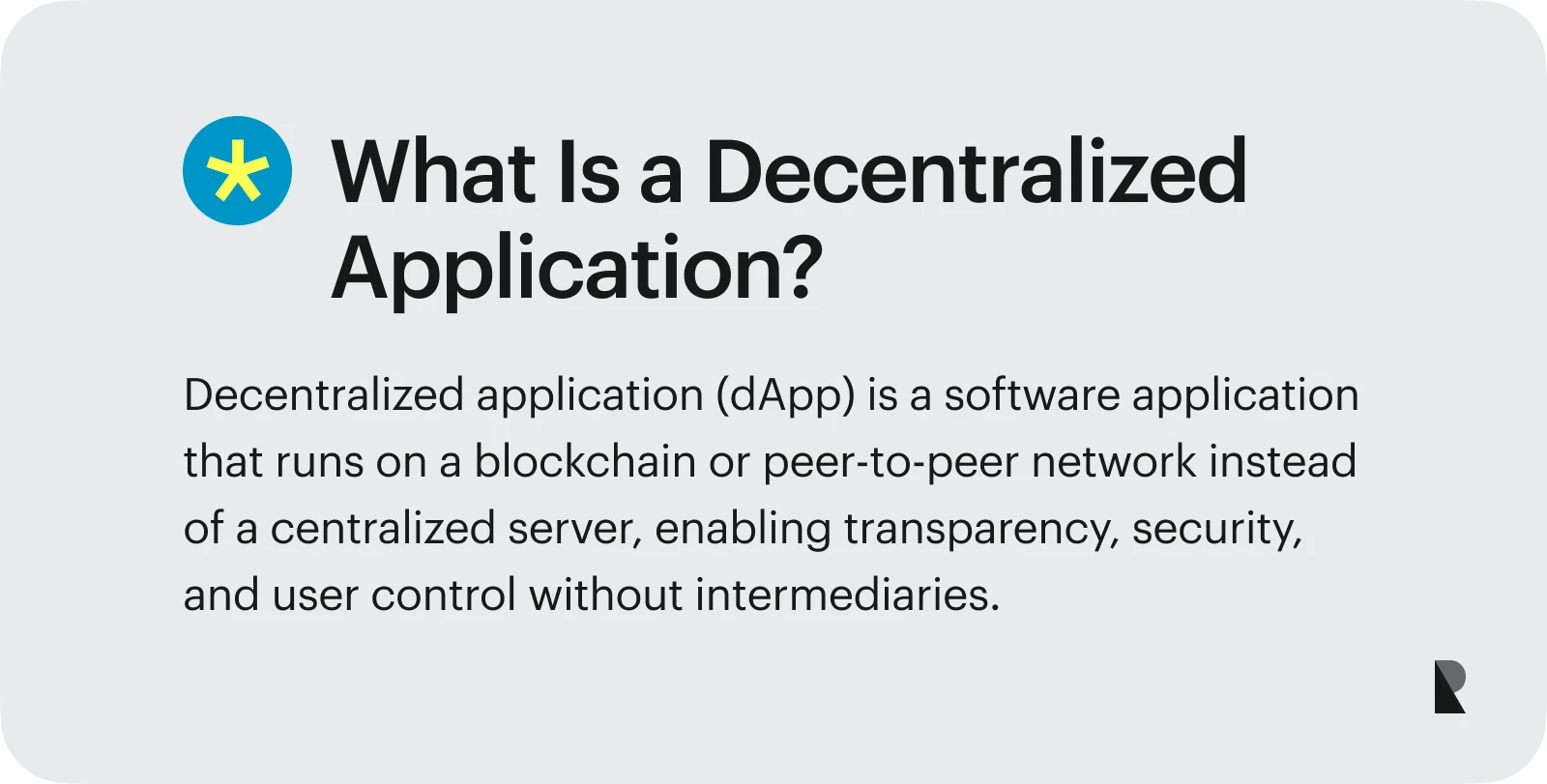
What is a dApp? When we look at the blockchain ecosystem, decentralized applications represent a fundamental shift in how software works. Did you know that 80% of dApps on Ethereum are used by less than 1000 users, despite their revolutionary potential?
Unlike traditional applications, dApps operate on blockchain networks rather than centralized servers. They provide enhanced security, improved user privacy, and resistance to censorship by distributing control across multiple nodes instead of relying on a single entity. Bitcoin, notably, stands as the first cryptocurrency and an example of a decentralized application.
If you're considering building your own blockchain-based product, partnering with an experienced app development agency can help you navigate the complexities of smart contracts, tokenomics, and decentralized architecture.
Many top development companies now specialize in blockchain and Web3 solutions, offering expertise to ensure your dApp is secure, scalable, and user-friendly.
Unfortunately, security challenges remain significant. In 2022 alone, 312 hacks and vulnerabilities affected dApps, resulting in approximately 48 billion in losses. However, financial losses decreased substantially to 1.9 billion in 2023, though the frequency of hacks actually increased by 17.3%.
In this article, we'll break down what dApps are, how they work, and explore their key components, including blockchain infrastructure, smart contracts, cryptographic verification, and distributed consensus protocols.
Defining Decentralized Application
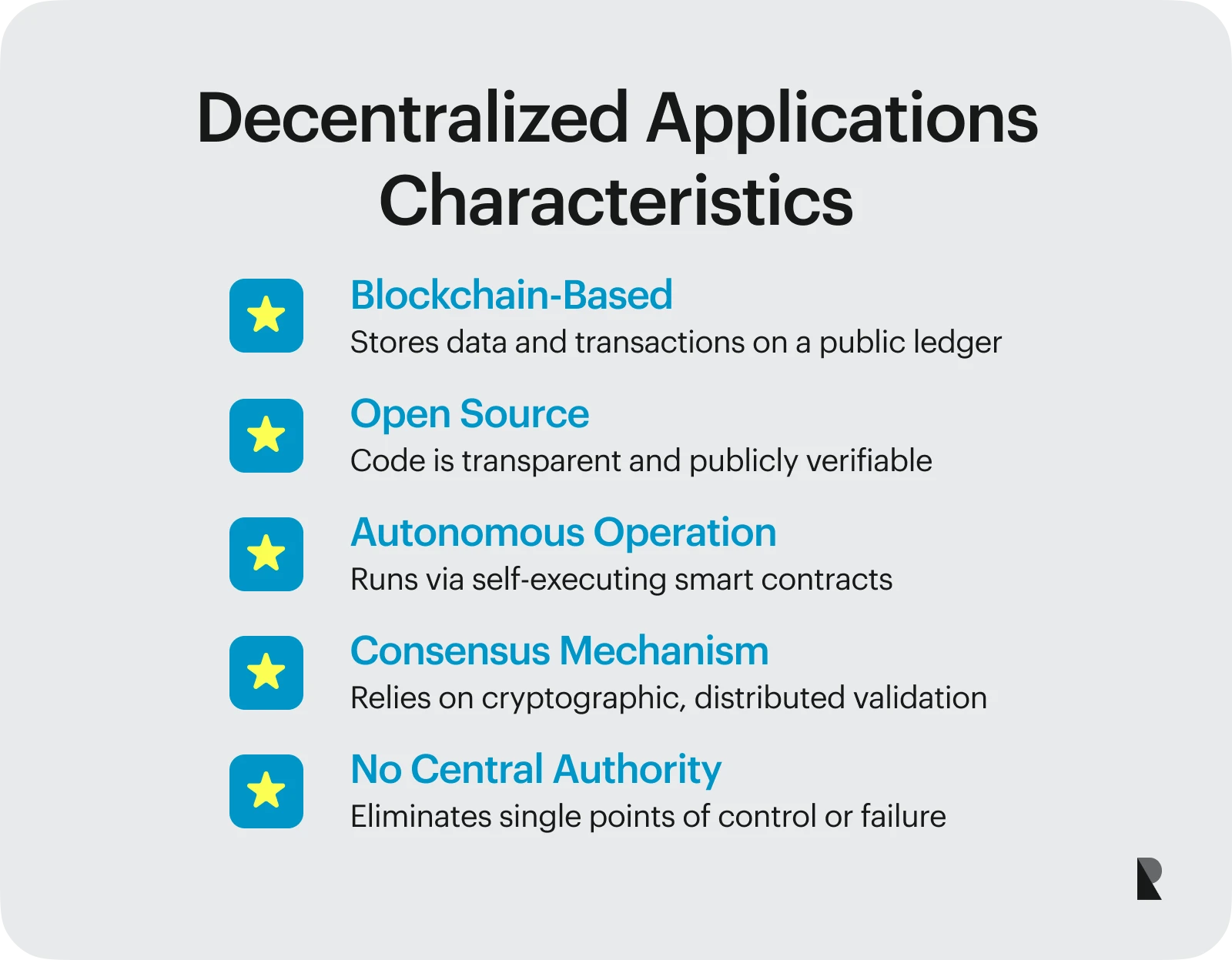
Decentralized applications (dApps) represent a fundamental evolution in software architecture. At their core, dApps are digital applications that run on distributed blockchain networks instead of operating on centralized servers controlled by a single entity or organization.
The defining characteristic of a decentralized application is its backend code running on a peer-to-peer network. While traditional applications utilize centralized servers, dApps operate across multiple computers (nodes) simultaneously, ensuring no single point of failure exists.
For an application to qualify as truly decentralized, it must meet several key criteria:
- Blockchain-based: The application must store all records and data on a public blockchain
- Open source: The code should be available for scrutiny and verification by anyone
- Autonomous operation: Functions through smart contracts—self-executing code that automatically implements rules and agreements
- Consensus mechanism: Uses cryptographic verification and distributed consensus protocols
- No central authority: Operates without control by any single entity
Smart contracts serve as the backbone of most dApps, functioning as self-executing agreements with rules written directly into code. These contracts automatically execute when predetermined conditions are met, eliminating the need for intermediaries.
Furthermore, decentralized applications typically use cryptographic tokens for accessing the application and rewarding network participants. These tokens often serve multiple purposes within the ecosystem, from governance to utility functions.
The core philosophy behind dApps emphasizes returning data ownership to users. Traditional applications store user information on company-owned servers, giving corporations control over personal data.
While Bitcoin pioneered the concept of decentralized applications as a peer-to-peer financial system, platforms like Ethereum significantly expanded dApp capabilities by introducing programmable smart contracts.
Centralized vs. Decentralized Applications
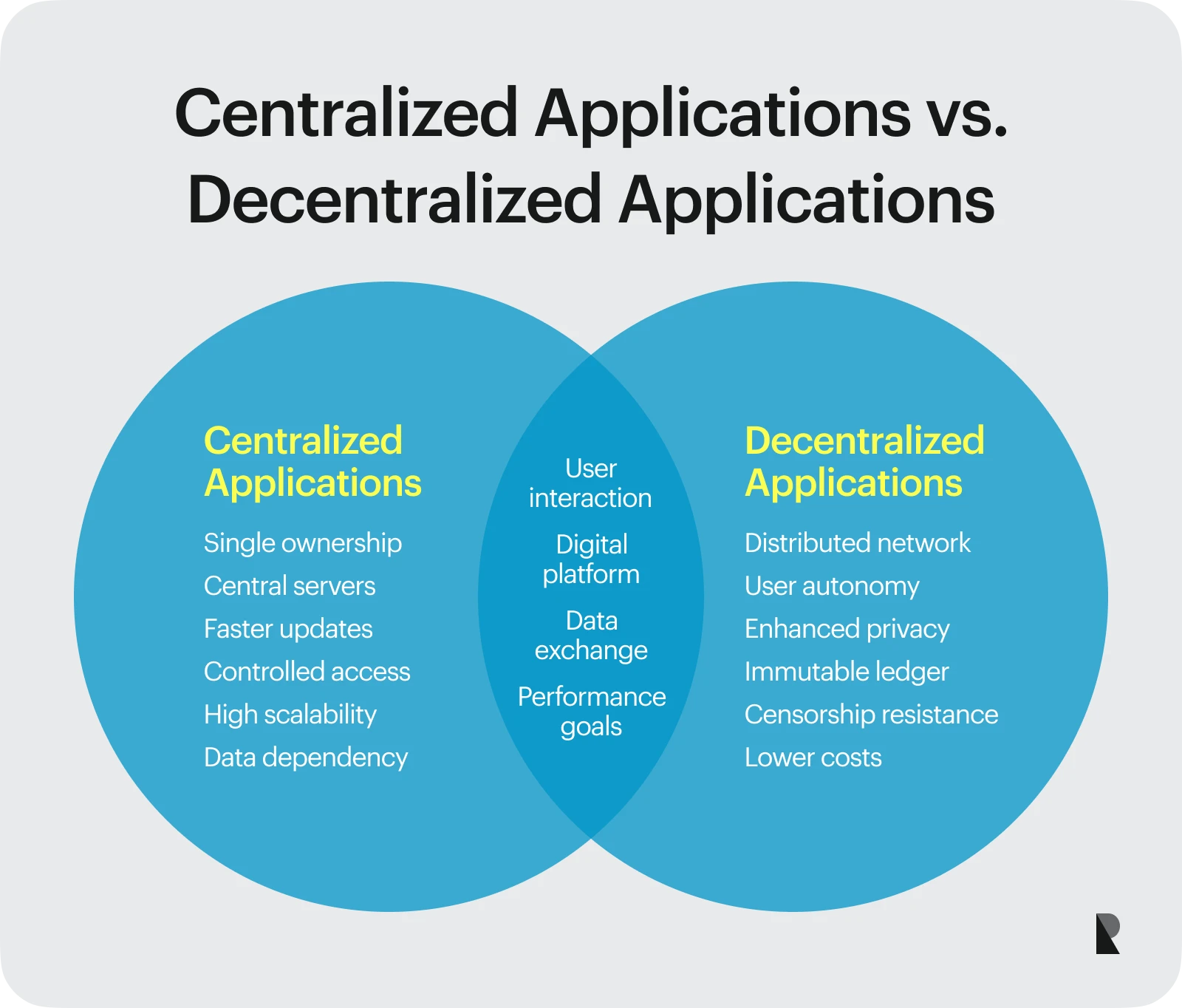
Understanding the fundamental differences between traditional and blockchain-based applications helps clarify the unique value proposition of dApps. Traditional centralized apps operate under a completely different model from their decentralized counterparts.
The centralized application model has dominated software development for decades. Under this framework, a single entity maintains exclusive control over the application's software, servers, and data. Users simply download a copy of the app and interact with the company's central servers, sending and receiving information through this controlled channel.
In contrast, decentralized applications function on blockchain or peer-to-peer networks where users engage directly with one another without relying on any central authority. This peer-to-peer structure eliminates intermediaries, resulting in increased autonomy, reduced costs, and greater user trust.
Let's examine the key differences:
| Feature | Centralized applications | Decentralized applications |
|---|---|---|
| Ownership | Owned by a single entity or organization | Distributed across multiple nodes with no single owner |
| Data storage | Stored on centralized servers | Replicated across multiple community nodes |
| Security | Vulnerable to single-point failures and hacking | Resilient due to distributed architecture |
| Privacy | Provider may access user data | Users maintain ownership of their information |
| Censorship risk | Can be restricted or shut down by authorities | Resistant to censorship and interference |
| Scalability | Generally handles higher traffic volumes | Limited transaction throughput on some networks |
| Cost efficiency | Subscription-based, fixed pricing | Market-driven, potentially lower costs long-term |
| Transparency | Limited visibility into operations | Public, immutable ledger of all transactions |
| Updates | Easier to implement across user base | More difficult to roll out universally |
Beyond these structural differences, each model offers distinct advantages. Centralized apps provide smoother user experiences, faster transactions, and simpler management. Their established infrastructure supports easier scaling for massive user bases.
On the other hand, decentralized applications deliver enhanced transparency through public blockchain ledgers. They eliminate the need for intermediaries, potentially reducing costs. Perhaps most importantly, dApps provide users with greater control over their personal data, as they can choose what information to share and with whom.
Accordingly, when data security is paramount, the decentralized model offers significant advantages. The distributed nature of dApps makes them inherently resistant to unauthorized access and manipulation. Moreover, because data isn't stored in a central location, dApps are less vulnerable to hacking attempts.
This comparison underscores why many developers and users are increasingly drawn to decentralized applications, especially in sectors where data ownership, privacy, and censorship resistance are critical concerns.
How Decentralized Applications Work
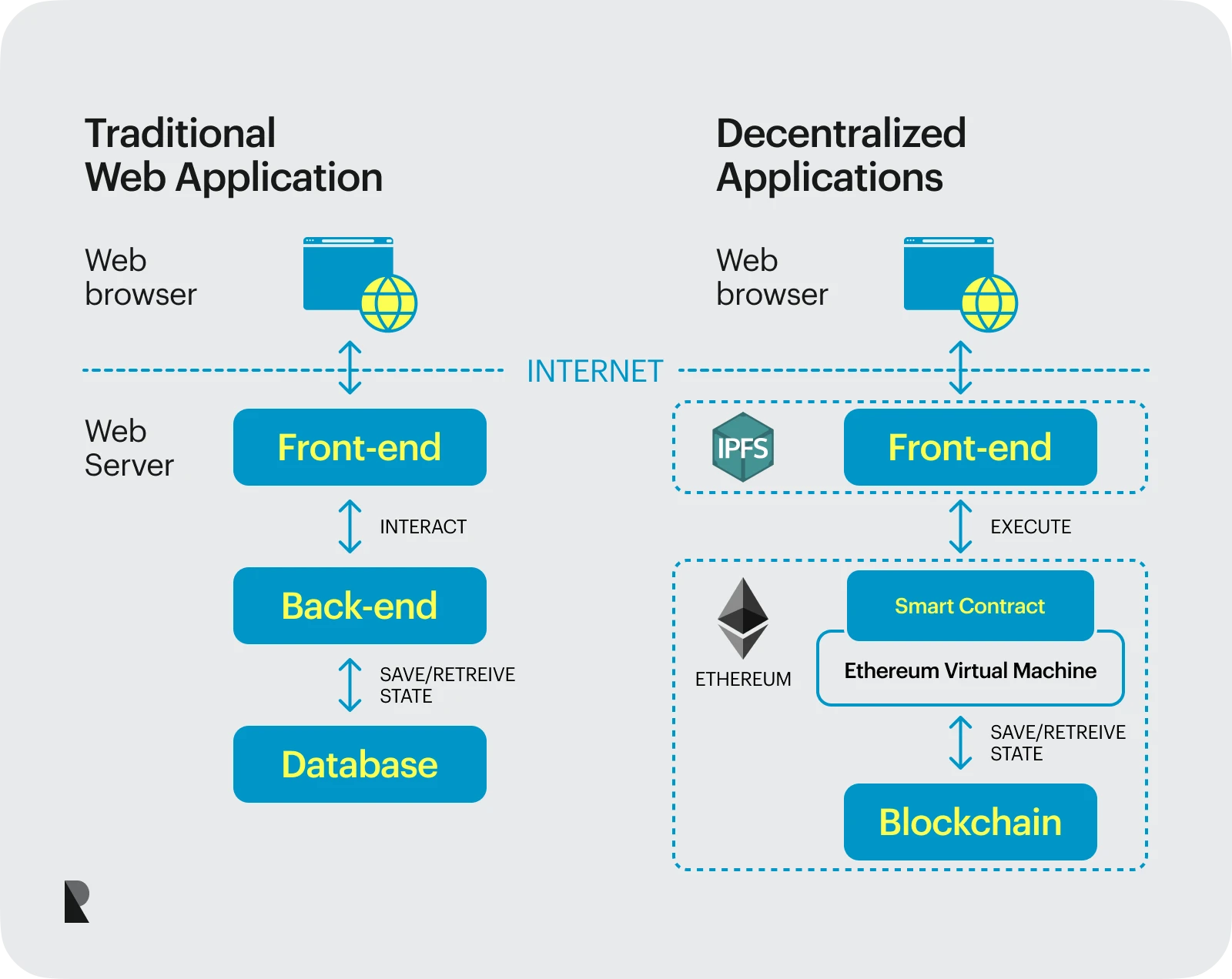
Traditional web application vs DApp architecture ([Image Source]http://ResearchGate))
The inner workings of dApps combine several technological components to deliver their unique capabilities. Primarily, dApps operate through a multi-layered architecture that integrates blockchain technology with user interfaces and decentralized storage solutions.
At the foundation of every dApp is its blockchain infrastructure, which records transactions as data blocks linked together through cryptographic hashes. Each block contains critical information about asset movements and timestamps to ensure chronological order and prevent retroactive alterations.
Smart contracts serve as the backbone of dApps, functioning as self-executing code that defines and enforces rules automatically. Once deployed on a blockchain network, these contracts execute predetermined actions when specific conditions are met, eliminating the need for intermediaries.
For decision-making, dApps employ consensus mechanisms. Firstly, proof of stake awards authority based on cryptocurrency ownership within the network. Proof of work, alternatively, allocates influence based on computing power through cryptographic challenges.
User interaction with dApps occurs through wallets that manage digital assets and authenticate users. These wallets store private keys and facilitate secure transactions with underlying smart contracts. Users connect their wallets to dApps, enabling them to sign transactions and interact with the blockchain securely.
Basically, the integration between components creates a system where:
- Users interact with a familiar interface
- Smart contracts process logic and connect to the blockchain
- Blockchain networks validate and record transactions
- Decentralized storage handles data efficiently
This architecture eliminates single points of failure, distributes control across network participants, and creates applications that operate without central authorities. Furthermore, the immutability of blockchain ensures that once smart contracts are deployed, they're extremely difficult to alter, potentially maintaining functionality even if the development team disbands.
Advantages and Challenges of dApps
Balancing promise and practicality, decentralized applications present a dual landscape of powerful benefits alongside notable limitations. As these blockchain-based systems continue to mature, understanding both sides becomes crucial for developers and users alike.
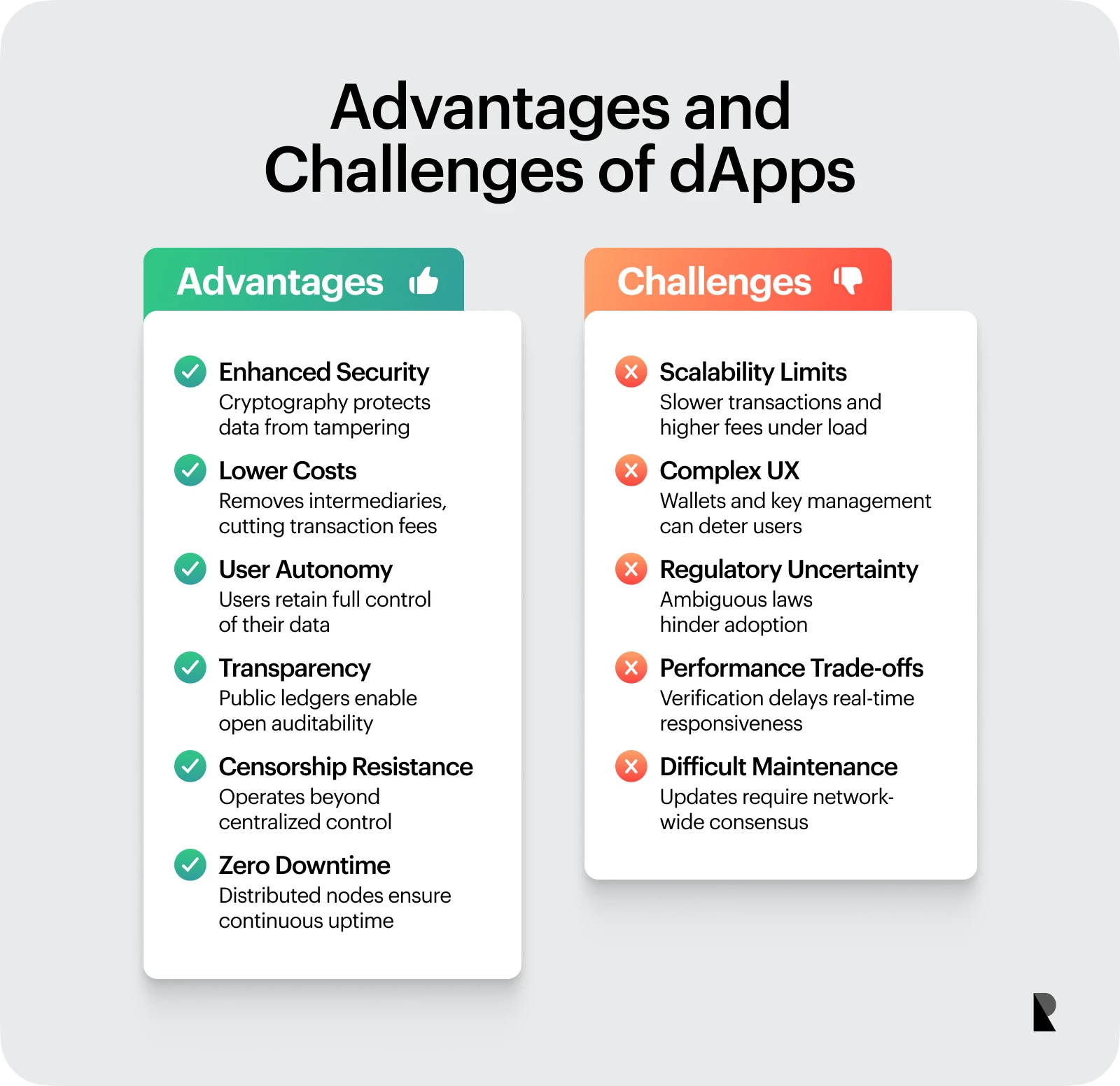
Advantages of dApps
Enhanced Security: Cryptographic protocols ensure data remains secure and tamper-resistant, making dApps considerably more resilient against unauthorized access. This security architecture inherently protects user information from manipulation.
Reduced transaction costs: By eliminating intermediaries, dApps significantly lower fees associated with digital transactions. This cost efficiency primarily benefits financial applications where traditional middlemen typically claim substantial percentages.
User Autonomy: Unlike conventional applications, dApps give users complete control over their personal data and digital interactions. Consequently, individuals maintain sovereignty over their information, choosing precisely how and when it's shared.
Transparency: All operations within dApps occur on open, transparent platforms, enabling complete auditability of transactions. This visibility builds trust among users without requiring central verification authorities.
Censorship resistance: Given their decentralized nature, dApps operate independently of any governing authority, making them inherently resistant to censorship. This feature proves particularly valuable in regions with restricted expression.
Zero downtime: Since dApps run on blockchain networks maintained by multiple nodes, they remain operational even if portions of the network fail. This resilience contrasts sharply with centralized systems prone to service interruptions.
Challenges of dApps
Scalability Limitations: Public blockchains like Ethereum face significant constraints in transaction volume, resulting in slower processing times and higher fees during peak usage. These bottlenecks hinder mass adoption.
User experience complexity: Interacting with dApps often requires technical knowledge about cryptocurrency wallets and private key management. Furthermore, users encounter unfamiliar transaction signing processes that can feel cumbersome.
Regulatory uncertainty: Many jurisdictions lack comprehensive frameworks for governing dApps, creating legal ambiguities for developers and users. This regulatory gap complicates compliance across different regions.
Performance constraints: While offering superior security, blockchain verification processes typically operate more slowly than traditional centralized systems. This trade-off impacts applications requiring instantaneous responses.
Maintenance challenges: Once deployed, dApps prove difficult to update since code modifications require consensus among network participants. This rigidity complicates bug fixes and feature enhancements.
Popular Use Cases of dApps
Decentralized applications have found practical implementation across numerous sectors, showcasing their versatility beyond theoretical concepts. These real-world applications demonstrate how blockchain technology addresses specific challenges in various industries.
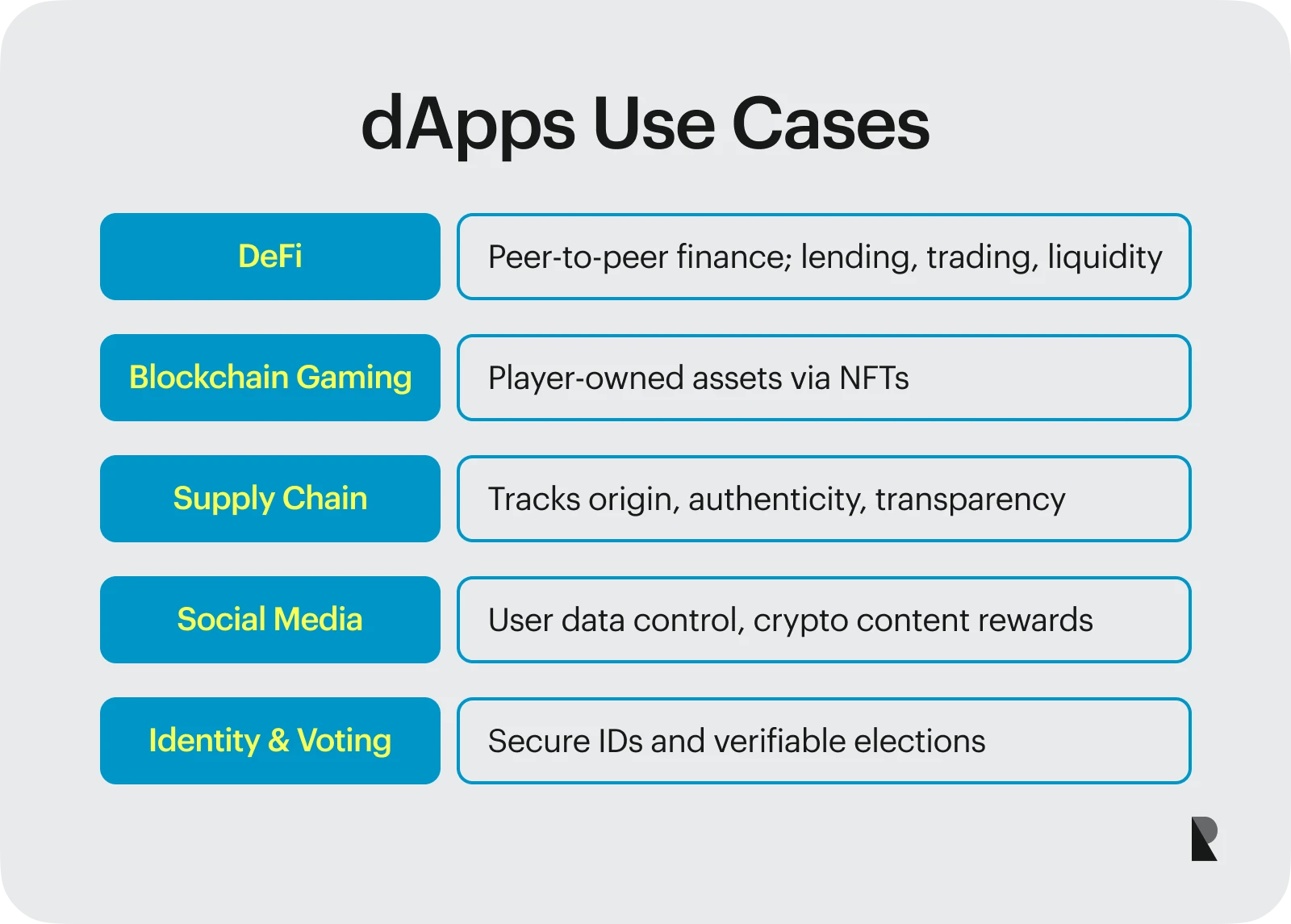
Decentralized finance (DeFi)
DeFi applications represent the most widespread adoption of dApp technology, creating financial systems that operate without traditional intermediaries. These platforms enable direct peer-to-peer lending, borrowing, and trading of assets through smart contracts.
Popular DeFi dApps like Uniswap facilitate token swaps, whereas Aave and Compound offer lending services where users earn interest by providing liquidity to markets.
Blockchain gaming
The gaming industry has embraced dApps to create experiences where players truly own their in-game assets. Games such as Axie Infinity and The Sandbox utilize non-fungible tokens (NFTs) to represent unique digital items that players can buy, sell, or trade outside the game environment.
Supply chain management
Throughout global supply chains, dApps provide unprecedented transparency by tracking products from origin to consumer. Companies implement these solutions to verify authenticity, reduce counterfeiting, and monitor ethical sourcing practices.
Each step of a product's journey gets recorded immutably on the blockchain, allowing stakeholders to access reliable information about manufacturing conditions, shipping details, and custody transfers.
Decentralized social media & content
Alternative social platforms built as dApps address privacy concerns and censorship issues prevalent in conventional social media. These networks give users control over their data alongside fair compensation for content creation.
Platforms like Steemit reward users with cryptocurrency for posting and curating content, creating incentive structures impossible within traditional models.
Identity management & voting systems
Identity verification dApps allow users to maintain sovereign digital identities without relying on centralized authorities. Furthermore, blockchain-based voting systems enhance electoral transparency while preserving voter privacy through cryptographic methods. These applications prevent tampering with results while enabling verification of legitimate participation.
Best Platforms for Building dApps
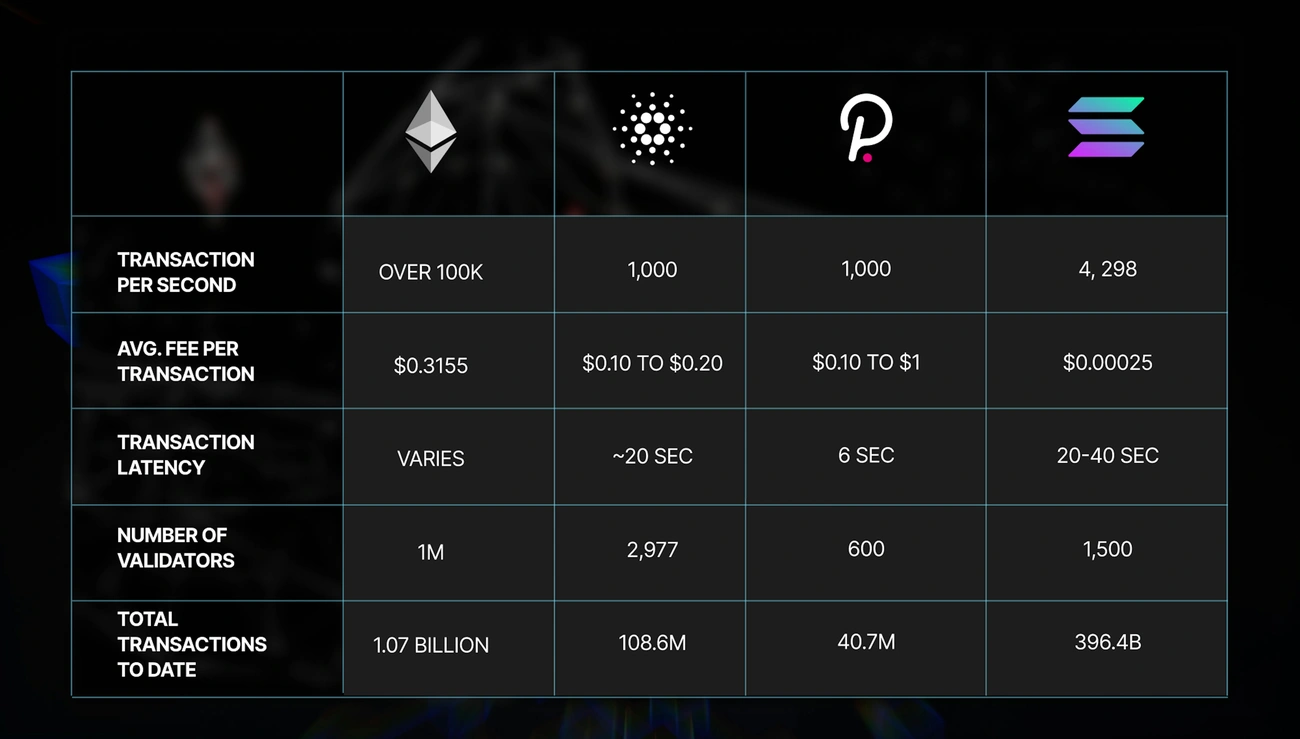
Best platforms for building dApps (Image Source)
Selecting the right platform remains crucial for developers aiming to create efficient and functional decentralized applications. Each blockchain offers distinct advantages in terms of performance, cost, and development environment.
Ethereum
As the pioneering smart contract platform, Ethereum maintains its position as the preferred choice for dApp development. Its extensive ecosystem provides robust developer tools, comprehensive documentation, and the largest community support.
The Ethereum Virtual Machine (EVM) enables developers to deploy applications regardless of the underlying coding language, eliminating the need to build entirely new blockchains.
Binance smart chain (BSC)
Launched in 2020, BSC offers a cost-effective alternative to Ethereum with faster transaction speeds and lower fees. Its Proof of Staked Authority (PoSA) consensus mechanism facilitates quick block confirmations while maintaining compatibility with the
Ethereum virtual machine
This compatibility allows developers to easily migrate projects from Ethereum without extensive code modifications. For businesses seeking rapid deployment and lower operational costs, BSC presents a compelling option.
Solana
Solana stands out primarily for its exceptional speed and affordability. Through its unique combination of Proof-of-Stake and Proof-of-History mechanisms, Solana processes thousands of transactions per second with minimal fees.
This high throughput capacity makes it particularly suitable for applications requiring real-time functionality. In early 2024, decentralized finance protocols built on Solana surpassed $30 billion in total value locked, demonstrating the platform's growing adoption.
Polkadot
Designed specifically for interoperability, Polkadot enables different blockchains to communicate and share information securely. Its architecture includes a main Relay Chain and customizable parachains that run parallel to it. These parachains can be tailored for specific purposes while benefiting from Polkadot's shared security model.
Conclusion
Decentralized applications represent a fundamental shift in how we interact with technology, moving control from centralized authorities to distributed networks. Throughout this exploration of dApps, we've seen how blockchain technology enables applications that prioritize user autonomy, enhanced security, and censorship resistance.
Despite their revolutionary potential, dApps still face considerable obstacles. Scalability limitations, user experience complexity, and regulatory uncertainties remain significant hurdles to mainstream adoption. Nevertheless, these challenges haven't prevented innovative implementations across diverse sectors.
The choice of blockchain platform significantly impacts a dApp's performance and capabilities. Ethereum maintains its position as the pioneer with robust developer support, while alternatives like Binance Smart Chain, Solana, and Polkadot offer unique advantages in speed, cost, or interoperability.
Oct 20, 2025
